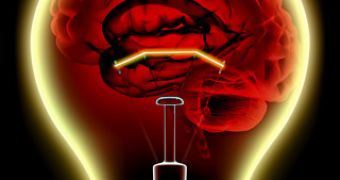University College London (UCL) scientists conducted new experiments recently, designed to study the patterns that the brain activates when a person feels hate. This study is a part of a larger one, designed to map and catalog the parts of the brain that are involved in main human emotions, such as love, hate, fear, danger and threat. Though some of these emotions share common areas in the brain, they mainly "operate" through different channels.
Hate does share some common pathways with aggression, which would explain why this feeling is such a major "catalyst" for violent behavior, be it on a personal or an international level. Usually, hate and fear are the main motives that push individuals or groups towards aggressive stances against other people or groups. Another question that the researchers are trying to answer, is how exactly hate shares some of its neural pathways with love.
UCL scientists have known for a long time that love and hate tend to generate some very similar reactions, including deceit, violence and heroic deeds. The reason why this happens is unclear and its one of the main reasons why the researchers conducted the current study. Test subjects were shown images of people they hated, and their brain response was scanned live, so that the used pathways could be identified.
Two distinct sub-cortex structures, the putamen and the insula, are involved in test subjects developing neural responses towards the people they viewed. "Significantly, the putamen and insula are also both activated by romantic love. This is not surprising. The putamen could also be involved in the preparation of aggressive acts in a romantic context, as in situations when a rival presents a danger," said UCL Wellcome Laboratory of Neurobiology professor Semir Zeki.
"Interestingly, the activity in some of these structures in response to viewing a hated face is proportional in strength to the declared intensity of hate, thus allowing the subjective state of hate to be objectively quantified. This finding may have legal implications in criminal cases, for example," the scientists concluded.

 14 DAY TRIAL //
14 DAY TRIAL //